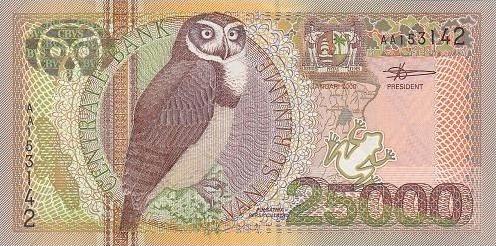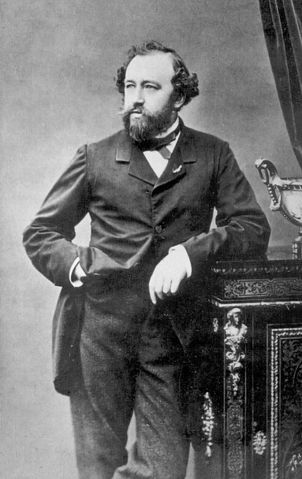https://www.youtube.com/watch?v=L48oOAA8FoY
Between 1769 and 1771, Austrian composer Johann Georg Albrechtsberger wrote at least seven concerti for Jew’s harp and strings.
He went on to teach Beethoven.
https://www.youtube.com/watch?v=L48oOAA8FoY
Between 1769 and 1771, Austrian composer Johann Georg Albrechtsberger wrote at least seven concerti for Jew’s harp and strings.
He went on to teach Beethoven.

Proverbs from around the world:
(From David Crystal, As They Say in Zanzibar, 2006.)
In 2015 Keele University historian Paul Booth found evidence of a man named “Roger Fuckbythenavele” in the Chester county court plea rolls of 1310:
County Court of Chester, held on Tuesday after the feast of St Nicholas, 4 Edw. II, before Payn Tibotot, justiciar of Chester (8th December 1310)
A man called ‘Roger Fuckbythenavele’ was exacted for the first time [the process preliminary to outlawry].
TNA CHES 29/23 m 10d
Booth believes that’s the earliest known reference to fuck as a swear word. “This surname is presumably a nickname. I suggest it could either mean an actual attempt at copulation by an inexperienced youth, later reported by a rejected girlfriend, or an equivalent of the word ‘dimwit’ i.e. a man who might think that that was the correct way to go about it.”
Humiliatingly, Roger is mentioned seven times by that name in the rolls in 1310 and 1311. The “serjeants of the peace” had been ordered to bring him before the court, but they’d failed to find him, and consequently he was outlawed. Apparently a court clerk gave him the nickname.
(Paul Booth, “An Early Fourteenth-Century Use of the F-word in Cheshire, 1310–11,” Transactions of the Historic Society of Lancashire and Cheshire 164 [2015], 99–102.)

diremption
n. a forcible separation; a tearing asunder
phronesis
n. practical judgment; the faculty of conducting oneself wisely
obsecrate
v. to entreat (a person) earnestly
rescribe
v. to write back; to write in reply
From Betty’s Weekly, Feb. 19, 1916:
Dear Betty — My boy has been in the trenches for six months, and expects to get furlough any moment. What I want to ask is that, if you were me, would you meet him at the station, or would you wait for him at home?
You ask me a difficult question, little girl, and I find it hard to advise you. Were I you I’d want with all my heart and soul to be the first woman my boy would see when he arrived. And yet, dear, the meeting him after all he’s been through would mean so much to me and to him, too, that I don’t think I could bear to see him in public. Really and truly, were I you, I’d wait for him alone somewhere — at home, if possible. Somehow, such a meeting is too sacred to be witnessed by anybody. But be sure you go to see him off when he leaves for the Front again, and be as brave as you can, dear.

In May 1934, desperate to escape the authorities, John Dillinger engaged two underworld plastic surgeons, Wilhelm Loeser and Harold Cassidy, to change his appearance.
[T]he two doctors removed the moles between the eyes — Loeser working on one side, Cassidy on the other. Then they cut the cheek along the ear and the edge of the jaw and transplanted some of the flesh to the dimple on the chin. Finally they tightened up the cheeks with kangaroo tendons.
Five days later the doctors returned to remove Dillinger’s fingerprints, using a combination of nitric and hydrochloric acid. The gangster told them he was unhappy with their facial work — he thought that apart from being “messed up,” his appearance hadn’t changed. Dillinger’s attorney, Louis Piquett, convinced him that the job had been a success, but “secretly he thought his client looked as if he’d been in a dog fight.”
It scarcely mattered — he was gunned down outside Chicago’s Biograph Theater two months later.
(From John Toland, The Dillinger Days, 1995.)
On Wednesday, July 6, he was engaged to sup with me at my lodgings in Downing-street, Westminster. But on the preceding night my landlord having behaved very rudely to me and some company who were with me, I had resolved not to remain another night in his house. I was exceedingly uneasy at the awkward appearance I supposed I should make to Johnson and the other gentlemen whom I had invited, not being able to receive them at home, and being obliged to order supper at the Mitre. I went to Johnson in the morning, and talked of it as a serious distress. He laughed, and said, ‘Consider, Sir, how insignificant this will appear a twelvemonth hence.’–Were this consideration to be applied to most of the little vexatious incidents of life, by which our quiet is too often disturbed, it would prevent many painful sensations. I have tried it frequently, with good effect. ‘There is nothing (continued he) in this mighty misfortune; nay, we shall be better at the Mitre.’
— James Boswell, Life of Samuel Johnson, 1791
Every night at 9 p.m. a horn is blown at the four corners of the market obelisk in Ripon, North Yorkshire. The tradition dates back to 886, when Alfred the Great granted a charter to the settlement and offered them a symbolic horn. At the king’s advice the townspeople appointed a wakeman to patrol the settlement throughout the night; he would sound the horn at the four corners of the market to inform the people that the watch was set and he was now on patrol.
In 1604 James I granted the city a second charter, and the hornblower was now appointed by the democratically elected mayor, who gave him an extra duty: After setting the watch at the market cross he must find the mayor, wherever he may be in the city, sound the horn three times before him, raise his hat, bow his head, and tell him, “Mr. Mayor, the watch is set.” That tradition is still carried out today.
In 1989 Poul Anderson wrote a short text using only words of Germanic origin, to show what English might look like if it expressed new concepts using German-style compounds rather than borrowing from other languages. The piece described atomic theory, or “uncleftish beholding”:
The firststuffs have their being as motes called unclefts. These are mightly small; one seedweight of waterstuff holds a tale of them like unto two followed by twenty-two naughts. Most unclefts link together to make what are called bulkbits. Thus, the waterstuff bulkbit bestands of two waterstuff unclefts, the sourstuff bulkbit of two sourstuff unclefts, and so on. (Some kinds, such as sunstuff, keep alone; others, such as iron, cling together in ices when in the fast standing; and there are yet more yokeways.) When unlike clefts link in a bulkbit, they make bindings. Thus, water is a binding of two waterstuff unclefts with one sourstuff uncleft, while a bulkbit of one of the forestuffs making up flesh may have a thousand thousand or more unclefts of these two firststuffs together with coalstuff and chokestuff.
The full text is here. Douglas Hofstadter called this style “Ander-Saxon.”
UPDATE: Apparently there’s a whole wiki for “Anglish,” including recastings of famous texts:
Four score and seven years ago our fathers brought forth on this greatland, a new folkship, dreamt in freedom, and sworn to the forthput that all men are made evenworthy. Now we are betrothed in a great folk-war, testing whether that folkship, or any folkship so born and so sworn, can long withstand. We are met on a great battle-field of that war.
(Thanks, Dave.)

Adolphe Sax, inventor of the saxophone, was alarmingly accident-prone as a child:
Before he was two, he fell headlong down three flights of stairs and cracked his head on a stone floor. When only three he almost expired through drinking a mixture of vitriol and water in mistake for milk, being narrowly saved by the application of liberal doses of olive oil. Three other poisoning mishaps followed involving white lead, copper oxide and arsenic as well as the swallowing of a pin. A gunpowder explosion gave him severe burns and threw him a considerable distance; he was again burned when a frying pan was knocked over. A lifelong scar on his head was caused by a falling roof-stone. Once he went to bed in a room where some newly varnished objects were drying, being found in time to prevent asphyxiation from the fumes. No wonder the people of the locality called him, ‘Young Sax, the Ghost!’
When he was pulled, nearly drowned, from a river, his mother said, “He’s a child condemned to misfortune; he won’t live!” But he survived to 79 and died in 1894.
(From Wally Horwood, Adolphe Sax 1814-1894, 1980.) (Thanks, Jonathan.)

Hate and debate Rome through the world hath spread,
Yet Roma amor is, if backward read.
Then is’t not strange Rome hate should foster? No:
For out of backward love all hate doth grow.
— Sir John Harington